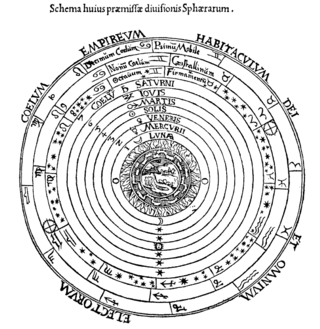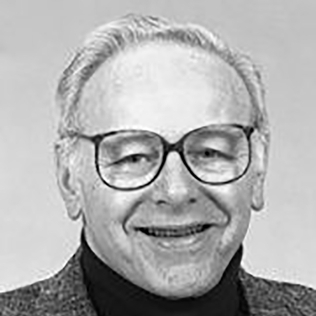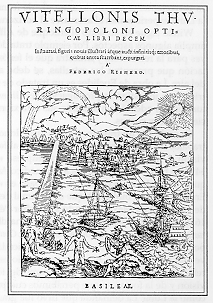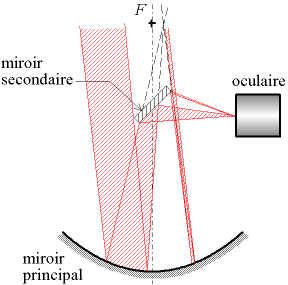Related Research Articles

Ḥasan Ibn al-Haytham was a medieval mathematician, astronomer, and physicist of the Islamic Golden Age from present-day Iraq. Referred to as "the father of modern optics", he made significant contributions to the principles of optics and visual perception in particular. His most influential work is titled Kitāb al-Manāẓir, written during 1011–1021, which survived in a Latin edition. The works of Alhazen were frequently cited during the scientific revolution by Isaac Newton, Johannes Kepler, Christiaan Huygens, and Galileo Galilei.

Roger Bacon, also known by the scholastic accolade Doctor Mirabilis, was a polymath, a medieval English philosopher, scientist, theologian and Franciscan friar who placed considerable emphasis on the study of nature through empiricism. Intertwining his Catholic faith with scientific thinking, Roger Bacon is considered one of the greatest polymaths of the medieval period.

The Scientific Revolution was a series of events that marked the emergence of modern science during the early modern period, when developments in mathematics, physics, astronomy, biology and chemistry transformed the views of society about nature. The Scientific Revolution took place in Europe in the second half of the Renaissance period, with the 1543 Nicolaus Copernicus publication De revolutionibus orbium coelestium often cited as its beginning. The Scientific Revolution has been called "the most important transformation in human history" since the Neolithic Revolution.

John Peckham was a Franciscan friar and Archbishop of Canterbury in the years 1279–1292.

The celestial spheres, or celestial orbs, were the fundamental entities of the cosmological models developed by Plato, Eudoxus, Aristotle, Ptolemy, Copernicus, and others. In these celestial models, the apparent motions of the fixed stars and planets are accounted for by treating them as embedded in rotating spheres made of an aetherial, transparent fifth element (quintessence), like gems set in orbs. Since it was believed that the fixed stars did not change their positions relative to one another, it was argued that they must be on the surface of a single starry sphere.

Pierre Maurice Marie Duhem was a French theoretical physicist who worked on thermodynamics, hydrodynamics, and the theory of elasticity. Duhem was also a historian of science, noted for his work on the European Middle Ages, which is regarded as having created the field of the history of medieval science. As a philosopher of science, he is remembered principally for his views on the indeterminacy of experimental criteria.

Edward Grant was an American historian of medieval science. He was named a distinguished professor in 1983. Other honors include the 1992 George Sarton Medal, for "a lifetime scholarly achievement" as an historian of science.

Vitello was a Polish friar, theologian, natural philosopher and an important figure in the history of philosophy in Poland.

Catoptrics deals with the phenomena of reflected light and image-forming optical systems using mirrors. A catoptric system is also called a catopter (catoptre).

Optics began with the development of lenses by the ancient Egyptians and Mesopotamians, followed by theories on light and vision developed by ancient Greek philosophers, and the development of geometrical optics in the Greco-Roman world. The word optics is derived from the Greek term τα ὀπτικά meaning 'appearance, look'. Optics was significantly reformed by the developments in the medieval Islamic world, such as the beginnings of physical and physiological optics, and then significantly advanced in early modern Europe, where diffractive optics began. These earlier studies on optics are now known as "classical optics". The term "modern optics" refers to areas of optical research that largely developed in the 20th century, such as wave optics and quantum optics.
The conflict thesis is a historiographical approach in the history of science that originated in the 19th century with John William Draper and Andrew Dickson White. It maintains that there is an intrinsic intellectual conflict between religion and science, and that it inevitably leads to hostility. The consensus among historians of science is that the thesis has long been discredited, which explains the rejection of the thesis by contemporary scholars. Into the 21st century, historians of science widely accept a complexity thesis.

Ronald Leslie Numbers was an American historian of science. He was awarded the 2008 George Sarton Medal by the History of Science Society for "a lifetime of exceptional scholarly achievement by a distinguished scholar".
David Woodward was an English-born American historian of cartography and cartographer.

In the history of ideas, the continuity thesis is the hypothesis that there was no radical discontinuity between the intellectual development of the Middle Ages and the developments in the Renaissance and early modern period. Thus the idea of an intellectual or scientific revolution following the Renaissance is, according to the continuity thesis, a myth. Some continuity theorists point to earlier intellectual revolutions occurring in the Middle Ages, usually referring to the European Renaissance of the 12th century as a sign of continuity.
Martin John Spencer Rudwick is a British geologist, historian, and academic. Rudwick is an emeritus professor of History at the University of California, San Diego and an affiliated research scholar at Cambridge University's Department of History and Philosophy of Science. His principal field of study is the history of the earth sciences; his work has been described as the "definitive histories of the pre-Darwinian earth sciences". Rudwick was an early scholar to critique the conflict thesis regarding religion and science.

The Book of Optics is a seven-volume treatise on optics and other fields of study composed by the medieval Arab scholar Ibn al-Haytham, known in the West as Alhazen or Alhacen.
The natural sciences saw various advancements during the Golden Age of Islam, adding a number of innovations to the Transmission of the Classics. During this period, Islamic theology was encouraging of thinkers to find knowledge. Thinkers from this period included Al-Farabi, Abu Bishr Matta, Ibn Sina, al-Hassan Ibn al-Haytham and Ibn Bajjah. These works and the important commentaries on them were the wellspring of science during the medieval period. They were translated into Arabic, the lingua franca of this period.

European science in the Middle Ages comprised the study of nature, mathematics and natural philosophy in medieval Europe. Following the fall of the Western Roman Empire and the decline in knowledge of Greek, Christian Western Europe was cut off from an important source of ancient learning. Although a range of Christian clerics and scholars from Isidore and Bede to Jean Buridan and Nicole Oresme maintained the spirit of rational inquiry, Western Europe would see a period of scientific decline during the Early Middle Ages. However, by the time of the High Middle Ages, the region had rallied and was on its way to once more taking the lead in scientific discovery. Scholarship and scientific discoveries of the Late Middle Ages laid the groundwork for the Scientific Revolution of the Early Modern Period.
Blasius of Parma was an Italian philosopher, mathematician and astrologer. He popularised English and French philosophical work in Italy, where he associated both with scholastics and with early Renaissance humanists.

Most scientific and technical innovations prior to the Scientific Revolution were achieved by societies organized by religious traditions. Ancient Christian scholars pioneered individual elements of the scientific method. Historically, Christianity has been and still is a patron of sciences. It has been prolific in the foundation of schools, universities and hospitals, and many Christian clergy have been active in the sciences and have made significant contributions to the development of science.
References
- 1 2 "ACMRS Distinguished Lecture - Lindberg". Archived from the original on 2003-01-18. Retrieved 2007-07-02.
- ↑ "David Charles Lindberg Obituary - Visitation & Funeral Information". www.gundersonfh.com. Retrieved 2022-11-18.
External links
- Archived academic homepage
- Beyond War and Peace: A Reappraisal of the Encounter between Christianity and Science
- Obituary
David Lindberg | |
|---|---|
| Born | November 15, 1935 Minneapolis, Minnesota, U.S. |
| Died | January 6, 2015 (aged 79) Madison, Wisconsin, U.S. |
| Awards | George Sarton Medal (1999) |
| Academic background | |
| Education | Northwestern University (BS) Indiana University Bloomington (PhD) |
| Thesis | John Pecham and the Science of Optics: Perspectiva communis (1970) |